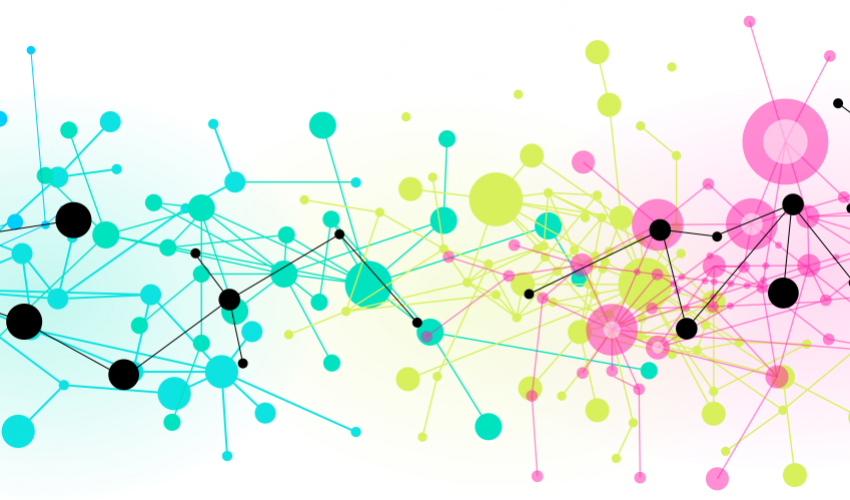
Creativity is an open network
DIVERSITY AND INSTABILITY GUARANTEE A LONG, CONTINUOUS, AND REGULAR CONTEXT FOR CREATIVE RESOURCES, ESPECIALLY IN ORGANIZATIONS. AS SHOWN BY A STUDY THAT ANALYZED THE COLLABORATION MODELS OF OVER 200 ARTISTS WHO WORKED ON THE CREATION OF 273 EPISODES OF THE DOCTOR WHO TV SERIESby Giuseppe Soda, Ronald S. Burt, Pier Vittorio Mannucci, Dean of SDA Bocconi SChool of Management; Professor of Social Network Analysis (Bocconi); Assistant Professor at LBS
Creativity often manifests itself as a bolt of lightning – something that strikes once and forever changes the course of what follows. Stories abound about creative people who shaped the field with only one memorable piece of work, whether it is a movie, a song, a painting, or a novel. Harper Lee is one example: her novel 'To Kill a Mockingbird' won the Pulitzer Prize in 1960 and remains the only work she published during her lifetime.
When it comes to creativity in organizations, however, producing a single creative contribution is not enough: particularly within organizations, to sustain enduring competitive success, employees’ creativity must be continuous and regular, not bumpy and erratic. Nurturing and preserving creativity over time has thus become increasingly important for firm innovation and success.
One well-known recipe for stimulating creativity is interacting with people belonging to different, disconnected social circles and exposing oneself to diverse content. Diversity – of perspectives, of knowledge – has been shown to be the fuel that the human brain needs to power the creative engine.
However, over time interacting with the same people and working with the same content leads to diminishing creative returns – even if they are diverse. The creative engine will stop if you do not add a spark to kickstart it. We find that that spark is instability. Adding new people shakes things up, changing team dynamics and sparking new ways of working and thinking. New ties bring a positive ‘shock’ that pushes individuals in the network to change the way they organize and process knowledge, as well as the way they interact and collaborate. Some instability is needed in order to help people get the best out of open networks over time: individuals working in open but stable structures eventually get caught in creative ruts because of increased routinization and rigidity of interactions and cognitive structures.
To study such an important topic we needed to find a context in which: 1) creative individuals continuously engage in collaborations to generate creative outcomes; 2) the outcome is a single cultural product realized over a long period of time within the same company, rather than a variety of ones to rule out product-specific or studio-specific characteristics that affect the results; 3) a controlled context for creativity in which the relatively stable narrative reduces for product-specific variations.
We found that context by investigating the collaboration patterns of over 200 artists that have worked on 273 episodes of Doctor Who, the BBC science fiction television series that follows the adventures of an extra-terrestrial being called “The Doctor” who explores the universe thanks to a spaceship called TARDIS, which allows him to travel in space and time (click here to see the graphic representation). Launched in 1963, the show has enjoyed a continued success among critics and fans and has attracted a lot of praise for its creativity and ability to reinvent itself.
One of the core premises of the show is actually about the importance of change: every time the Doctor is mortally wounded, the Doctor is reincarnated in a different body. Originally conceived as a device to allow the production to continue when the lead actor wanted to quit, regeneration over time has become a key defining feature of the character and of the show, making it a perfect illustration of our findings.
Changing one’s network is not an easy task: we tend to like working repeatedly with the same people, particularly if we like them of if the collaboration has been successful. Yet, creativity cannot be achieved without rejuvenation: having an open network that bridges many disconnected groups can go a certain way, but without some fresh faces in your midst you are likely to see your creativity decline.
To ensure a continued flow of creative ideas, you must not only balance diversity and instability – you must embrace them. It is no easy task: we like being surrounded by similar people, and we love predictability and control. Knowing each other well can be very efficient and comfortable – but it is precisely from discomfort, from interacting with people that are different from us that creative ideas are born.
Breaking free from your usual ways is more likely when you are exposed to people whose opinions and behaviors are different from your own – and it’s even more likely when these people change occasionally.
